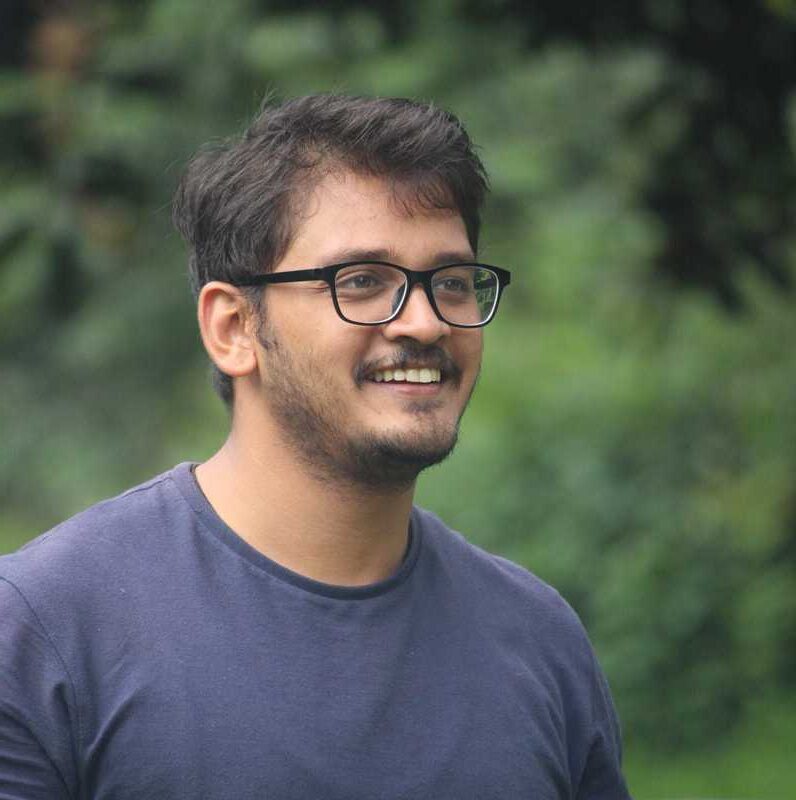I was always fascinated by the diversity in the North-East India and Eastern Himalayas. Finally, an opportunity came up and I was part of a team to survey riverine biodiversity along Lohit river in Arunachal Pradesh. I was then working on the Gangetic River Dolphin project with the Wildlife Institute of India and most of my fieldwork pertained to studying riverine birds while surveying dolphins in the Brahmaputra. However, the riverine biodiversity survey was something different. We wanted to document as much biodiversity as we could. It was a typical natural history exploration. One of our quests was also to find the critically endangered Bengal Florican. Initially, we surveyed the upstream of the river from Parshuram Kund. We had to drive up the Mishmi hills ghat and climb down into a village called Tidding. In that short climb into the Eastern Himalayas, from 400m to 1400m elevation, I had already added some 10 bird species in my life list. Not just that, I could notice some similarities in these birds in the Eastern Himalaya and the ones found in the Western Himalaya, where I had spent a lot of time before. For example, the call of the Golden Babbler was very similar to that of Black-chinned Babbler. The habitat niches occupied by some of these birds were very similar. In spite of these similarities, there were different species on either side of the same mountain range. It was only after observing this diversity in the wild that I started thinking about how species are distributed in different geographical regions in the Indian Subcontinent. In the same survey, wWe walked nearly 40km along the Lohit river basin documenting all sorts of wild species. We travelled in a rowing boat and camped along the river bank near the Tezu forests. However, there was no sign of the Bengal Florican for most of our journey.
We even travelled in a motor boat as the river width and depth increased. We encountered large river islands (called ‘Chapori’) with tall grasses. We docked on almost every river island to look for this bird. We interviewed local people who were grazing cattle on these islands. But did not get any information on this elusive bird. We usually skipped islands on which we would see fresh tracks of wildlife like elephants and buffaloes in the sand. However, once, the tracks had vanished because of rain. Unaware, we ventured inside the island and were chased by Wild Water Buffaloes. After seeing our desperate efforts of seeing the Bengal Florican which went to the extent of risking our lives, our boatman FINALLY took interest in the Bengal Florican. He independently started interviewing local people in Assamese. And at last… one fine evening.. just before sunset, when we climbed up on a river island.. We heard the call “chirik chirik”. I turned to my colleague to know if he was doing a playback and just then, I saw four male Bengal Floricans flushing from a thicket only a few metres from me. The joy of such natural history explorations sparks new ideas and provides a sense of deep satisfaction.
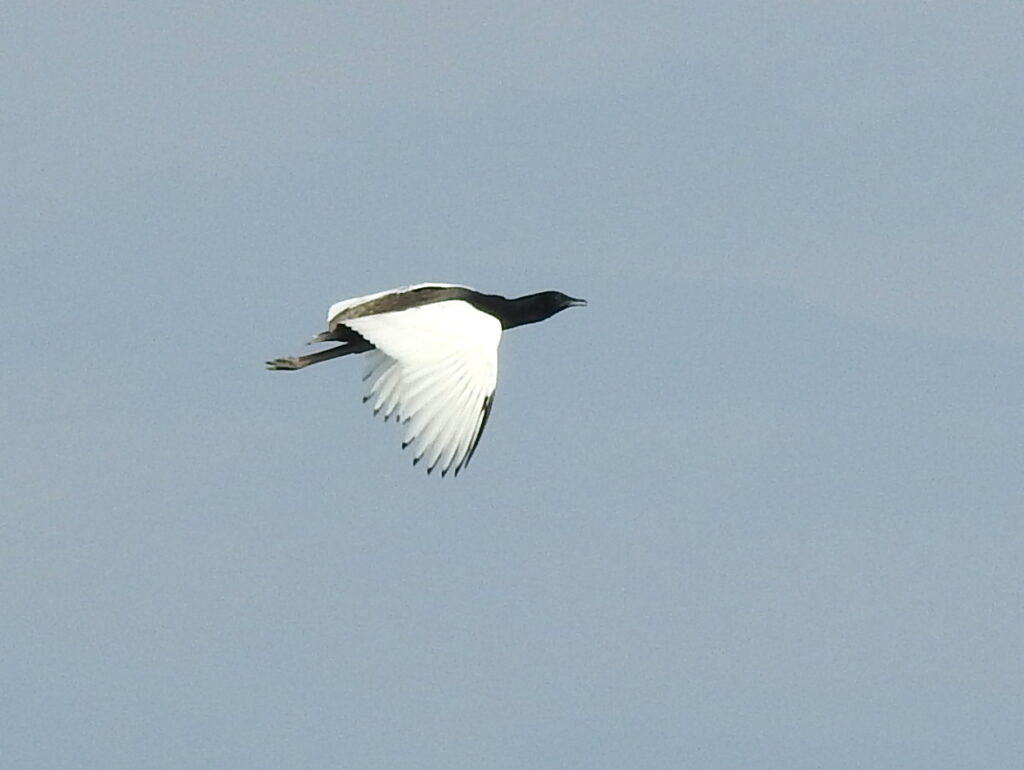 Male Bengal Florican in flight
Male Bengal Florican in flight
This is how my interest in birds and nature took shape..
Since my school days, I have always been fascinated by wildlife and forests, but I had a very different picture of forests in my mind back then. My perception had originated from bedtime stories. I wasn’t sure if there was a career in this field, and generally, the scope of such non-mainstream fields was not glorified in my school. But then, one day in my 9th class, when we were on a school trip, one of my best friends Gaurav Kalyani pointed to a black coloured bird out of nowhere and said, “Look, that’s a Black Drongo”. He showed me a Pond Heron and a White-breasted Kingfisher (the then common name) too. I was surprised that birds have names, and more surprised that my friend knew those names! Upon casually interrogating him about this, I learned that he had been to several forests in Maharashtra with a non-profit NGO called the Nature Walk and had seen many wild animals and birds. The same year, I joined Nature Walk and attended my first wildlife outdoor camp in the Nagzira Wildlife Sanctuary. I was mentored by field naturalists like Anuj Khare and Kiran Purandare, who introduced me to wildlife. Some of my first birds were a hovering Pied Kingfisher, an Indian Roller, a White-eyed Buzzard and a Grey-headed Fish-eagle… And from there started my birding spree. I went back to school only to realise that the tree branch extending towards my classroom window used to get visitors like Cinereous Tits, Spotted Owlets and Purple Sunbirds and sometimes to our surprise, a couple of Grey Hornbills too. Later, as a volunteer at Nature Walk, I visited other forests like Kanha Tiger Reserve, Kudremukh National Park, Little Rann of Kutchh and Nannaj Wildlife Sanctuary to see the Great Indian Bustard, and so on. During my junior college year at Fergusson College, I got another mentor, Dr Sanjeev Nalavade, a geographer and an ornithologist, who taught me how to write field notes. These field notes included the tiniest details of whatever I observed in the field. Even today, I can’t miss writing field notes while on the field.
During class 12th, like most of my peers, I was also burdened with choosing a mainstream applied sciences stream and my liking towards birds and wildlife became ‘just a hobby’. I wasn’t very happy with my choice and wasn’t aware of a career in wildlife. However, my marks in the common entrance tests for the applied streams showed my inclination towards pure sciences. That’s when I started my B.Sc in Zoology at the Fergusson College in Pune. During my bachelor’s course, I continued exploring the wild and visited several forests and protected areas. My interest in wildlife started with birds, and I continued my birding during this period, adding many species to my life list. One important thing I learned from my naturalist mentors in Pune on several bird walks was to go beyond bird identification and observe what the birds were doing, which habitat they were seen in, which habitats they were not seen in, and so on. I believe the scientific thinking was already unknowingly being seeded into me. In my first year of B.Sc., I also became interested in spiders and started studying them on my own. I attended a few national conferences on Arachnology organised by the Indian Society of Arachnology and learned the basics of identifying spiders. I eventually wrote an application with my zoology department professors for UGC’s College with Potential for Excellence (CPE) grants. I secured my first grant of Rs. 20,000/- to study spider diversity and urbanisation in the Fergusson College campus. Although it wasn’t a big amount, it boosted my confidence and provided enough resources to document local spider diversity. I, along with my colleagues, later completed two more projects under CPE grants. In one, I documented mammals in the college campus and in the other, mapped Flying Fox colonies in the Pune city. I had a bunch of college mates interested in wildlife; each had taken up different taxa to study, including birds, reptiles, amphibians, butterflies, mammals, and plants, and all of them are now my peers in the research field. We collaborated and wrote a multi-taxa faunal review of our college’s green campus for Zoo’s print. In the summer break I also did a small internship with Kadambari Deshpande on her WWF-funded project on bats in the southern western ghats. I explored rich forests of Wayanad and learned about bats and some acoustics.
I took a year-long break after my bachelor’s to explore different academic and career options. During this time, I started an internship at the National Centre for Cell Science’s Microbial Culture Collection (now NCMR). I got an opportunity to learn the DNA barcoding of spiders with Dr Swapnil Gaikwad. In the following year got selected for doing an M.Sc. in Wiildlife Science at the Wildlife Institute of India. Around this time, the DNA barcoding work on spiders also got published and became my first journal article. For my dissertation, I studied spider community structure in the Nicobar Islands. After exploring these islands, I was hooked to the island systems and decided to continue working on islands/insular systems. After working on multiple taxa, I was ready to explore concepts and systems different from the taxon itself. I worked with the CAMPA endangered species recovery program Gangetic River Dolphin project of WII where I explored the riverine islands and their bird communities. Eventually, I got back to my original bird interest and joined Bird Lab at IISER Tirupati with Dr VV Robin. There I got interested in the bird malaria and the sky island system in the southern Western Ghats. My experience working on multiple taxa and in different geographic regions helped me explore different aspects of wildlife science in India, which together helped me make up my mind to pursue a research career in this field.
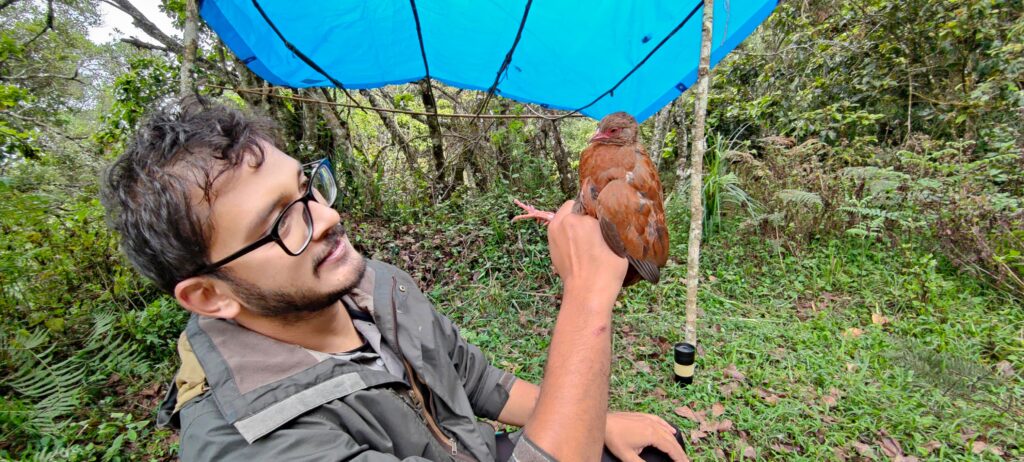 Mist netting birds in the Anamalai hills for detection of avian malaria and banding them with numbered rings for long term monitoring
Mist netting birds in the Anamalai hills for detection of avian malaria and banding them with numbered rings for long term monitoring
I am currently studying malaria and malaria-like blood parasites in the bird community of the Shola Sky Islands of the Western Ghats. Like in humans, and a few other mammals, Haemosporidian parasites in birds also require an intermediate insect vector to be transmitted between hosts. Mosquitoes are one of the vectors which transmit Plasmodium parasites among birds, while the biting midges and blackflies transmit Haemoproteus and Leucocytozoon parasites respectively. The Shola Sky Islands are climatically isolated mountain tops with a colder and wetter climate than in the valleys that separate them. This landscape also harbours several range-restricted endemic birds, which have a deep evolutionary history. These landscapes are believed to be once free of mosquitoes due to the cool climate and were possibly a sanctum from human malaria. However, in the last few decades, the habitat has drastically changed. With increasing tourism, human settlements have expanded. When I first visited Kodaikanal, one of the major towns on the Palani-Anamalai sky island, I noticed mosquitoes in the town. I also realised that several small shola forest patches are now nested within the township and are surrounded by human-dominated landscapes instead of natural grasslands. With the changing landscape and potentially changing the local vector community, I am presently examining the difference in the occurrence of different avian malaria parasites in the shola bird community between urban (disturbed) landscape and natural (protected areas) landscape.
I use 3D-printed light traps to capture mosquitoes which I co-designed with a colleague Sajal Sharma from the Robotics background. The landscape change may alter the diversity of birds and, in turn, the parasites that infect them and may change the host-parasite dynamics. I am also studying the mosquito community across an urbanisation gradient (from settlement to forest) in two high-elevation townships in Palani and Anamalai hills. This project is a part of my PhD thesis, being mentored by Dr Robin V.V. at IISER Tirupati and in collaboration with Dr Farah Ishtiaq from Tata Institute for Genetics and Society (TIGS) and Dr Guha Dharmarajan (KREA University) and is primarily funded by MoEFCC grant.
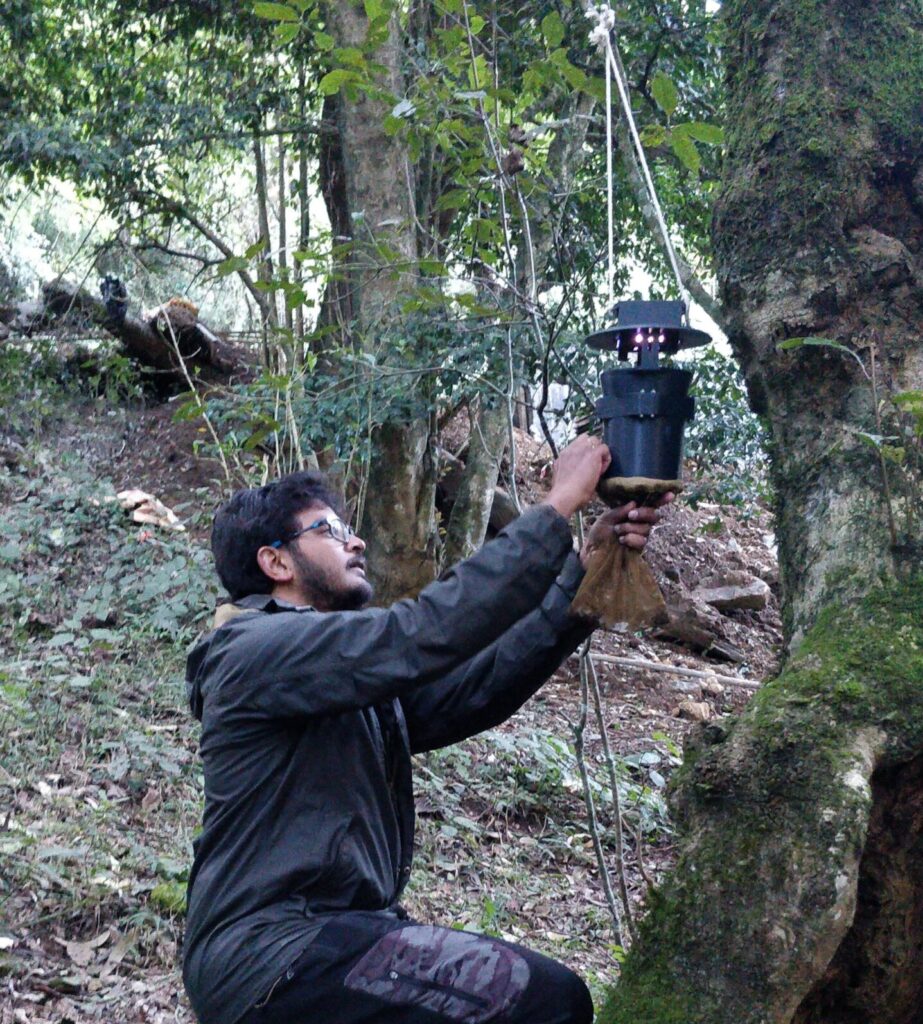 Setting up 3D printed mosquito traps (Photo credits: Chiti Arvind)
Setting up 3D printed mosquito traps (Photo credits: Chiti Arvind)
I love what I do because…
I am primarily driven by the natural history which comes from rigorous field work. I am at my best when I am out there in the mountains and forests, no matter how difficult the field work is. As a part of my field work, I catch birds using mist nets, mark them with numbered rings and take necessary samples to detect malaria later in the lab. When I revisit the sites, I see most of the birds I had ringed previously and that gives me immense joy. I also see many migratory birds which I ringed in the previous years, turning up at the exact same spot in the subsequent winters. Such records add to our knowledge on bird ecology and provide a rewarding satisfaction of my efforts.
In general, while observing natural phenomena, I slowly become better at judging things in the wild. For example, when I walk through a habitat patch and observe a certain vegetation structure, I expect some bird to be found there and when that same bird actually appears, it feels like a pat on my back. Not only that, such instances give me confidence to ask more nuanced ecological questions and draw new hypotheses.
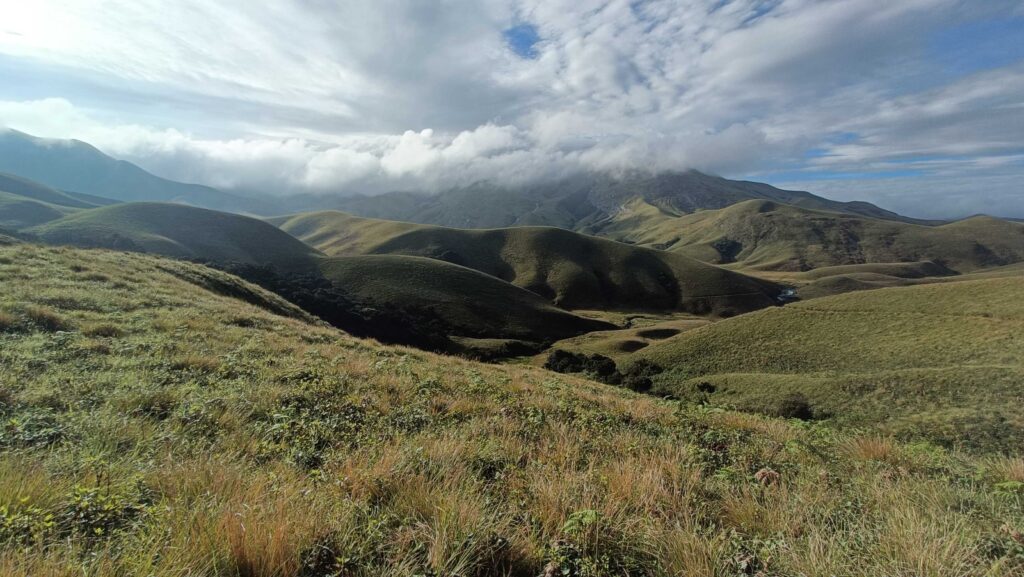 Anamalai Shola Landscape
Anamalai Shola Landscape
Challenges I have faced…
I have a habit of choosing uncommon and complicated topics for my study. The biggest challenge then I face is to explain my topic to local people in the field or to my relatives who keep wondering what I do for a living. This becomes even more challenging when I have to convince potential funding agencies about the importance of my work.
My field work involved carrying heavy equipment on the field. In order to finish the field work within time, I often require a big team of field assistants and interns. When it comes to managing 10+ people in a forest, their well being and safety is my responsibility too. Thankfully I have been lucky to have an excellent field team who made my life easy.
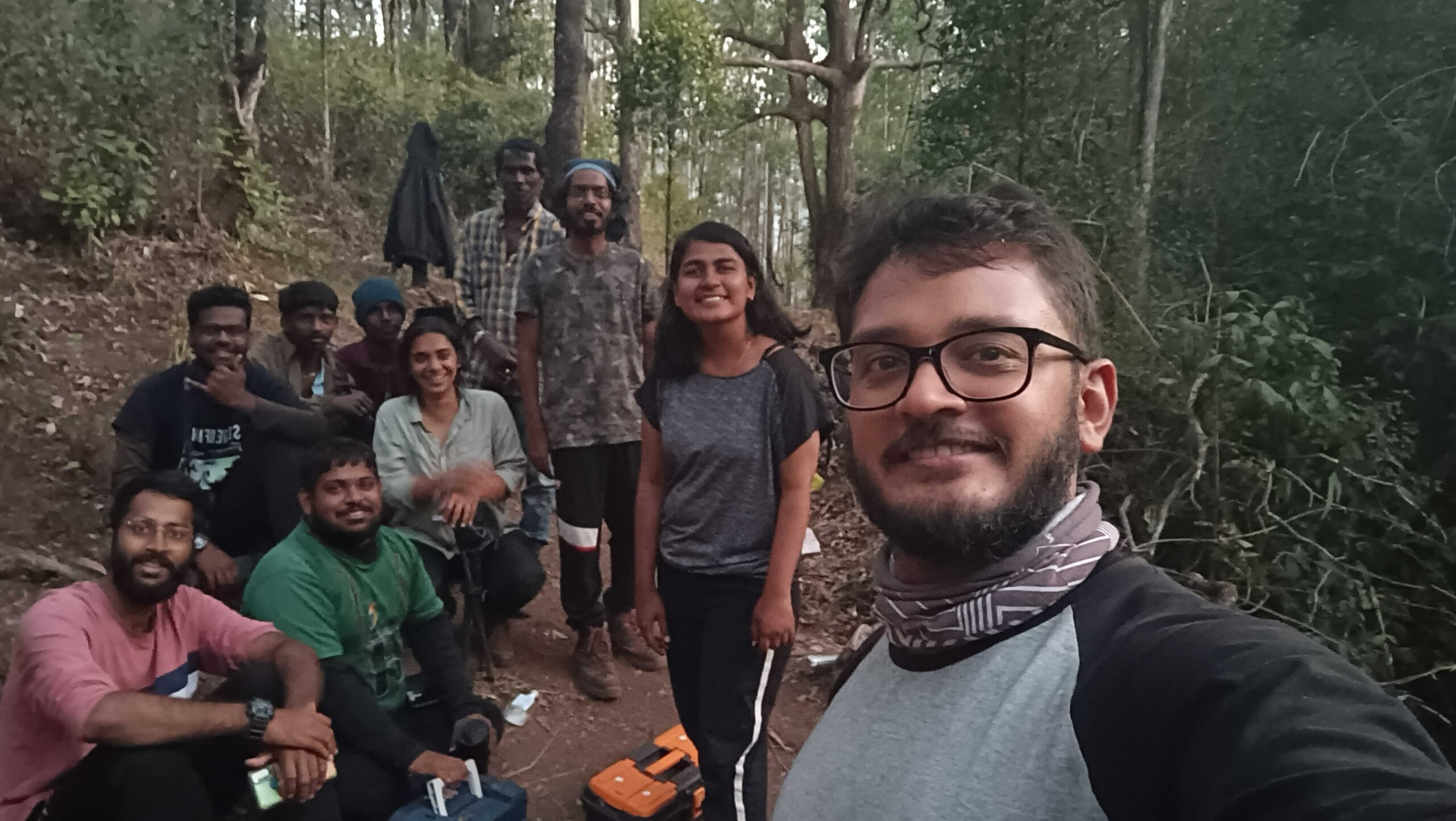 Field Team
Field Team
My advice to young researchers is…
My only advice would be to not necessarily get stuck in one type of species or taxa. It is not very difficult to familiarize ourselves with a new taxon, since we all are broadly motivated by wildlife. However, focussing on the concepts and ideas that interest you is more important. Especially when it comes to doing long term research like a 5+ year PhD, it is your motivation to find answers to your ecological questions which keeps you going through the journey.
Ashwin Warudkar
Email: [email protected], [email protected]
PhD Scholar, Bird Lab, IISER-Tirupati
Twitter/X Account
LinkedIn Account
Instagram handle

